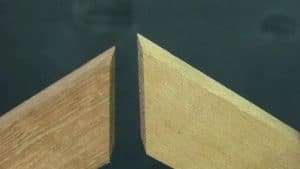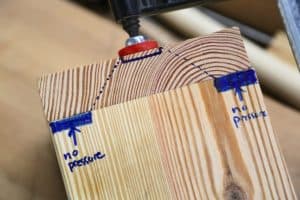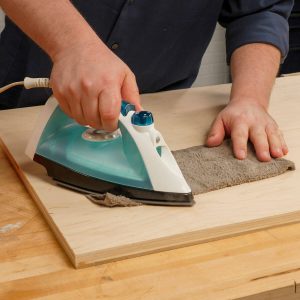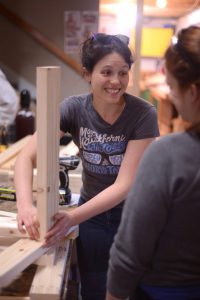With Summer drawing to an end and fall approaching we are looking forward to seeing you back in the shop. Fall is a time for starting your projects and getting back into your routines. Setting aside some time for personal exploration is an important part of that process. To help get you thinking we’ve put together a few tips to get you thinking and help improve your woodshop experience.

1.The Miter Joint & The Board Stretcher… When you find that you accidentally short one of the piece in your mitered frame it can be super frustrating, but filling the joint is NOT the answer. Just reach for the board stretcher. This mythical tool has been sought after by a great number of beginner woodworkers and while the tool itself is not a real thing the technique to accomplish this is really quite simple. Simple narrow the board a bit, effectively making the short end of the miter longer. Then you can sand in the wider board next to it and things will be looking better in no time.

2. How many clamps should you use for this glueup? To understand this problem it is helpful to imagine the “cone of pressure”. Visualize a set of line set at 45-degrees coming from the clamp. This will make it very easy to imagine where the pressures lie. The goal is to have full pressure along the wood joint. So, narrow boards will require more clamps and wide board fewer. So if you don’t have enough clamps add a wider caul to move the clamp further from the joint, thus spreading the cone wide. and while we’re on the subject did you know that you can add a drop or two of vinegar to thick glue to get it flowing smooth again?

3. Fixing the small dents…If you’re working away and notice a small dent or two in your wood, don’t fret. Just soak a rag or washcloth in some water and rig it out so it’s not soaked. Then press this on the effected dent area, and apply an iron on the highest setting. As you move the iron around on the cloth, the wood fiber will soak up the water, thus expanding back into their original position and you’ll be good to go.

4. Lastly, have fun. Woodworking can be an incredibly rewarding experience. Working around others can greatly help increase your skills and techniques. Don’t worry about making the perfect project to start. You’ll get there. Start small and simple, work your way up and out. Before you know it your skills will be both broad and deep, and we”ll be asking you for a few tricks to share as well. The trick as always is really to just get started. So make a plan and make your move…
See you around the shop.


Recent Comments